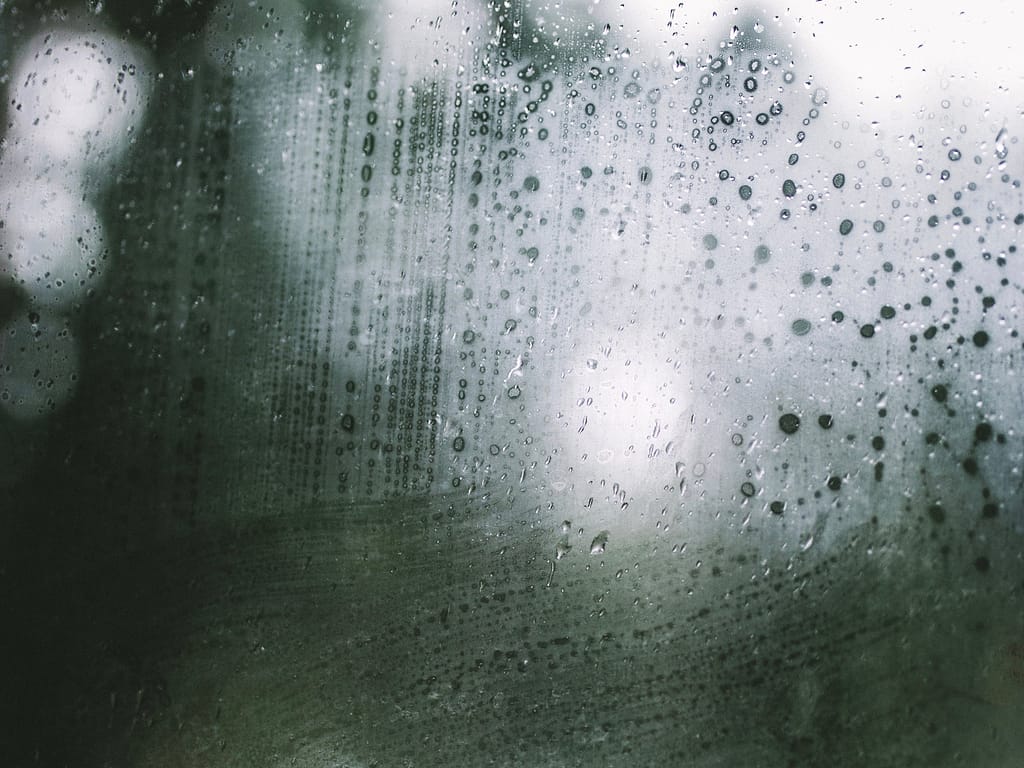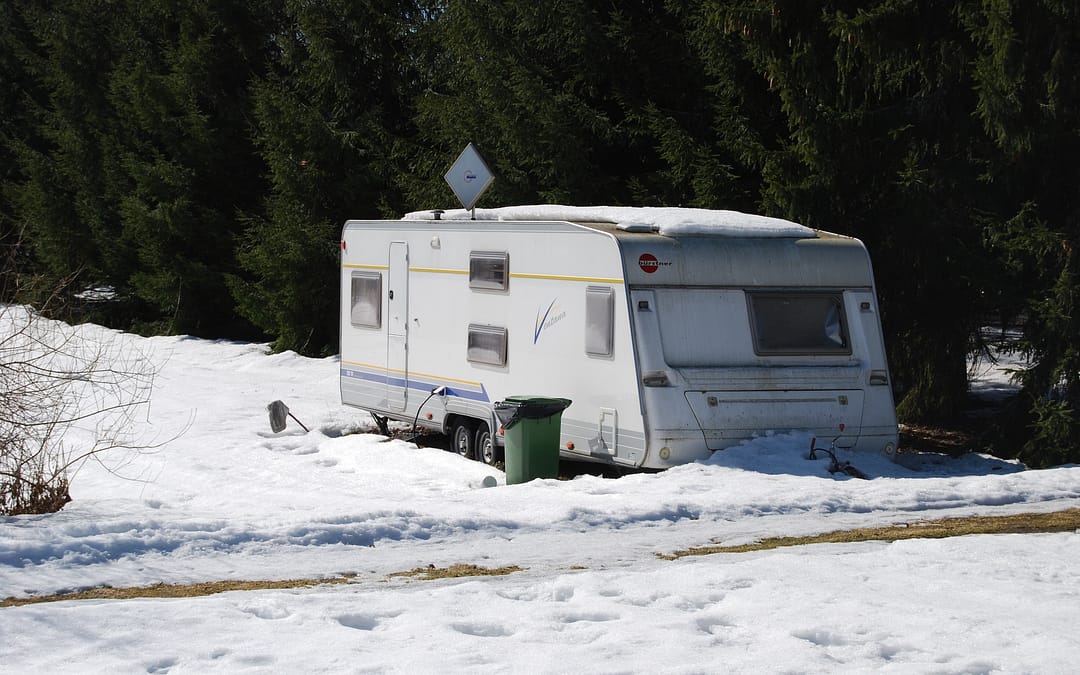This article may contain compensated links, please read our disclaimer for more information.
In the past, we’ve talked about our favorite winter RVing gear, as well as some tips for cold weather camping. What we haven’t covered in depth is how to insulate a camper for winter.
Generally speaking, RVs aren’t very well insulated straight out of the factory. This is unfortunate because it makes cold weather camping much more difficult. The good news? It is possible to improve upon your trailer insulation so you and your family can stay nice and cozy this winter season. Without further ado, we give you our top tips on how to insulate a camper for winter.
Add a Skirt
The most effective thing you can do when insulating RV campers is add a skirt. There are many different kinds of RV skirts out there, and the one that works best for you will depend on your budget, how handy you are, and whether you will be traveling or stationary during the winter months. Deciding on a skirt type is the first step when figuring out how to insulate a camper for winter.
We discuss RV skirting in depth here, but some of our favorites are vinyl skirting by The Skirting Co and inflatable skirting by AirSkirts. We like these options because they are lightweight, so you can carry them while you travel and they are easy to set up and take down.
No matter which type of skirting you choose, it will help keep your RV warm by preventing cold air from getting under the rig. This makes a major difference, especially when it comes to the temperature of your floors. Add some rugs to the floor for an extra layer of insulation on the floor!

Improve RV Window Insulation
The place where a lot of warm air leaves the RV? The windows. For this reason, it is incredibly important to ensure you have the best RV window insulation possible. Fortunately, this is pretty easy to do.
In order to insulate your RV windows, we recommend using a shrink wrap window insulation kit. These kits are quick and easy to install, and the plastic coverings are a surprisingly effective way to improve your trailer insulation. We love that this type of window insulation allows light to come into the RV, so you aren’t left feeling like you live in a cave.
Upgrade the Windows
Most RVs come with single-pane windows. These are fine as long as the weather is pleasant, but as mentioned before, they are one of the first places heat escapes while winter camping, and they let heat in when summer camping.
For this reason, you might want to think about upgrading to double-paned windows in your RV when deciding how to insulate a camper for winter. There are pros and cons to this upgrade, so be sure to do your research, but we think it’s worth considering if you’ll be spending a lot of time in super cold or especially hot climates.
Replace Caulk, Seals, and Weather Stripping
It’s important to keep up with all of the seals on your RV no matter what weather you’re camping in. That said, if you’ll be camping in cold weather, it becomes even more important. A worn bit of weather stripping or a missing bit of caulk could be letting in a cold draft that keeps you up at night.
Before you head to a cold location, add a new layer of RV sealant to everything. It’s also a good idea to check that your slide seals are still holding up and doing their job properly. Lastly, check the weather stripping around your RV door and in all the storage bays, and replace any pieces that are flattened out or missing entirely.
Cover Skylights and Vents
Heat rises. Therefore, it only makes sense that it would leave via the skylights and vents in your roof once it gets to them. Addressing this is an important step when figuring out how to insulate a camper for winter.
In order to ensure the warm air stays inside where it belongs, consider covering the skylights and roof vents in your RV. There are special pillows that are made for this purpose, but you can also make your own pillows, use throw pillows, tape some Relectix in place over each opening, or make your own covers like in the video below.
Add Insulation Under the Mattress
Many RV beds have a storage area under them with doors that lead outside. Unfortunately, these storage bays are rarely well-insulated, and the cold air from the storage area can make the bed above it pretty chilly at night.
To fix this problem, add a layer of insulation under your RV mattress. Foam board insulation works well for this, as does Reflectix. This is a great step to take when trying to figure out how to insulate a camper for winter.
Fill the Gaps
Lastly, be sure to look and feel around your rig and find any spots where cold air might be coming in. Look for cracks around the slides or the door and find ways to cover them. Many people find door snakes helpful, but rolled-up towels do the job just as well if you don’t want another thing to carry around in your RV. If you find a lot of cold is coming in through the door, consider hanging a tapestry to help keep the cold at bay.
There you have it, the best tips on how to insulate a camper for winter. These tips should help you keep warm air in and cold air out as you continue to enjoy RV life during the winter season. That said, they will also help you out in the hot summer months, as insulation is just as useful for keeping the cool air in and the heat out. Therefore, there’s really no reason not to take at least some of these steps to improve the insulation in your RV.
Join Fulltime Families
Fulltime Families Members get access to the best resources, community and discounts.
Fulltime Families is a participant in the Amazon Services LLC Associates Program, an affiliate advertising program designed to provide a means for sites to earn advertising fees by advertising and linking to amazon.com, amazon.co.uk, amazon.ca. Amazon and the Amazon logo are trademarks of Amazon.com, Inc. or its affiliates.

